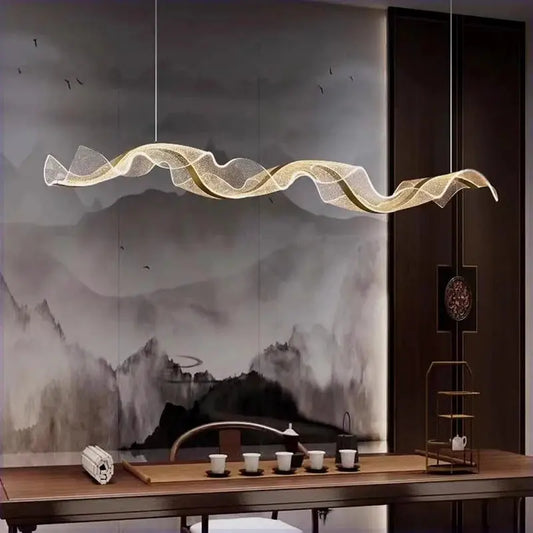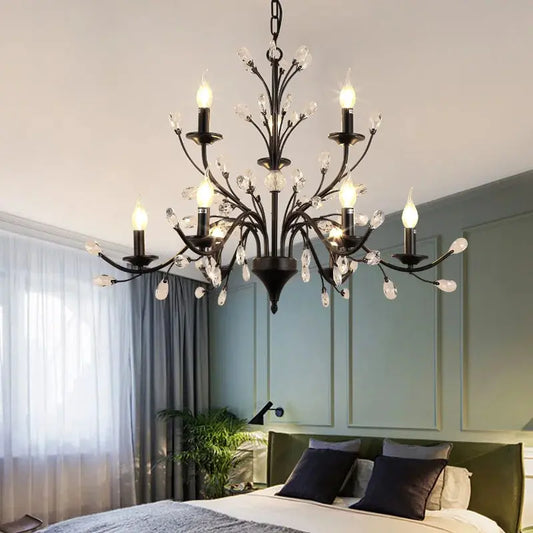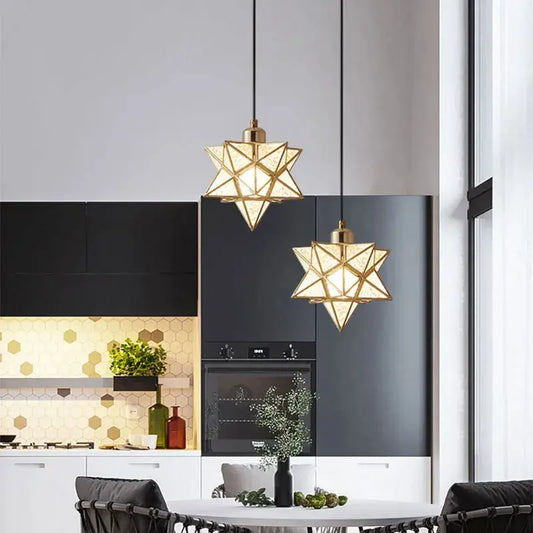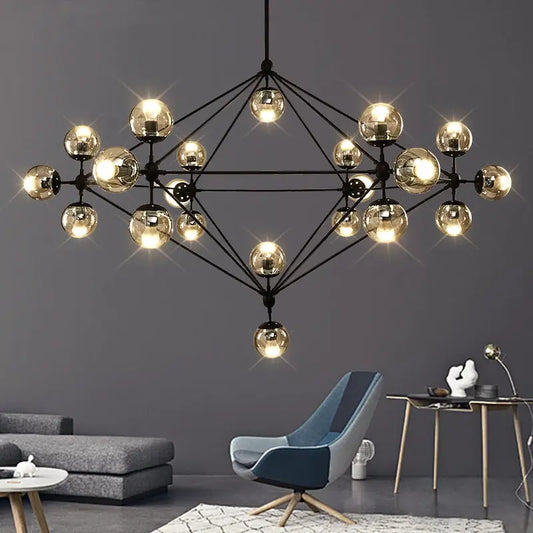How to Calculate Annual Light Fixture Cost
Learn how to calculate the annual cost of your light fixtures in four simple steps. Discover the importance of energy efficiency, dimmer switches, and proper lighting design in minimizing costs. Plus, explore helpful resources like our energy savings calculator and chandelier size calculator.
Understanding the annual cost of your light fixtures is crucial for managing your home's energy consumption and budget. This comprehensive guide will walk you through the process of calculating the annual price for a light fixture, helping you make informed decisions about your lighting choices.
Step 1: Determine the Wattage of Your Light Fixture
The first step in calculating the annual cost of a light fixture is to determine its wattage. Wattage is a measure of how much energy a light fixture consumes. You can usually find this information on the light bulb itself or in the product specifications.
For example, the modern ocean wave pendant chandelier and the wrought iron chandeliers shown above may have different wattages depending on the number and type of bulbs they use.
Step 2: Calculate Daily Usage Hours
Next, estimate how many hours per day you use the light fixture. This can vary depending on the room and your habits. For instance:
- Kitchen lights might be on for 4-6 hours a day
- Living room lights could be used for 3-5 hours in the evening
- Bedroom lights might only be on for 1-2 hours before bedtime
Consider seasonal variations and adjust your estimate accordingly. You can find more information about kitchen lighting and other room-specific lighting needs on our website.
Step 3: Determine Your Electricity Rate
Find out your local electricity rate, which is typically measured in cents per kilowatt-hour (kWh). You can find this information on your electricity bill or by contacting your utility provider. Rates may vary seasonally, so use an average if necessary.
Step 4: Perform the Annual Cost Calculation
Now that you have all the necessary information, follow these steps to calculate the annual cost:
- Convert the wattage to kilowatts by dividing by 1000 (e.g., 60 watts = 0.06 kW)
- Multiply the kilowatts by daily usage hours
- Multiply the result by 365 days
- Multiply by your electricity rate
Annual Cost Comparison of Light Fixtures
Let's look at an example using two different light fixtures:
Assuming the Modern Moravian star chandelier uses 40W LED bulbs and the Contemporary black chandelier uses 60W incandescent bulbs, let's calculate their annual costs:
Modern Moravian star chandelier (40W, 4 hours daily use, $0.12/kWh):
Annual Cost = (0.04 kW * 4 hours * 365 days * $0.12/kWh) = $7.01 per year
Contemporary black chandelier (60W * 15 bulbs = 900W, 4 hours daily use, $0.12/kWh):
Annual Cost = (0.9 kW * 4 hours * 365 days * $0.12/kWh) = $157.68 per year
This significant difference in annual cost showcases the importance of energy-efficient lighting choices.
Energy Savings Calculator
Additional Considerations
When calculating the annual price for a light fixture, keep these factors in mind:
- Energy efficiency of different bulb types (LED, CFL, incandescent)
- Impact of dimmer switches on energy consumption
- Long-term savings of LED fixtures
- Importance of proper lighting design for optimal efficiency
Explore our collection of energy-efficient light bulbs to find options that can help reduce your annual lighting costs.
Energy Efficiency
LED bulbs use 32.9 kWh annually vs 219.7 kWh for incandescent
Dimmer Switches
Smart dimmers can save up to 20% energy
Long-term Savings
LED fixtures cost $5 over 25 years vs $10 for others
Proper Lighting Design
Layered lighting, natural light, sensors, smart systems
Summary - Effective Strategies for Calculating Lighting Costs
Calculating the annual price for a light fixture is an essential step in managing your home's energy consumption and costs. By considering factors such as wattage, usage hours, and electricity rates, you can make informed decisions about your lighting choices. Remember to balance cost considerations with aesthetics and functionality when selecting light fixtures for your home.
For more information on energy-efficient lighting options and to explore our wide range of lighting fixtures, visit our website. You can also use online tools like the Inch Calculator Lighting Energy Cost Calculator to help you estimate costs for different lighting scenarios.
By making smart lighting choices, you can create a beautiful, well-lit home while keeping your energy costs under control.
What is the formula for calculating light fixtures?
The basic formula is: Number of fixtures = (Required lumens / Lumens per fixture) x (1 / Light loss factor). Required lumens are calculated by multiplying the area by required foot-candles. Light loss factor typically ranges from 0.7 to 0.8. This formula helps determine the number of fixtures needed for proper illumination in a given space.
How to calculate how much a light costs?
To calculate light cost: 1) Determine bulb wattage, 2) Calculate kWh used: (Wattage x Hours used per day) / 1000, 3) Multiply kWh by electricity rate. For example, a 60W bulb used 5 hours/day at $0.12/kWh costs about $0.036 per day. This method provides a quick estimate of daily lighting expenses.
How much does a light cost per year?
To calculate annual light cost, multiply the daily cost by 365 days. Using the previous example of $0.036 per day, the annual cost would be approximately $13.14. Actual costs may vary based on usage and electricity rates. This calculation helps in budgeting and comparing long-term lighting costs.
What method is used for the lighting calculations?
Three main methods are used for lighting calculations: 1) Lumen Method (Light Flux Method), 2) Point-to-Point Method, and 3) Watt per Square Meter Method. The Lumen Method is most common for general lighting design, while the others are used for specific applications or quick estimations.
How do you calculate indoor light fixtures?
To calculate indoor fixtures:
1) Measure room dimensions,
2) Determine required illumination (lux),
3) Calculate total lumens (Area x Required lux),
4) Choose fixture type and lumen output,
5) Divide total lumens by lumens per fixture,
6) Adjust for light loss factor.
This process ensures proper lighting distribution in indoor spaces.














